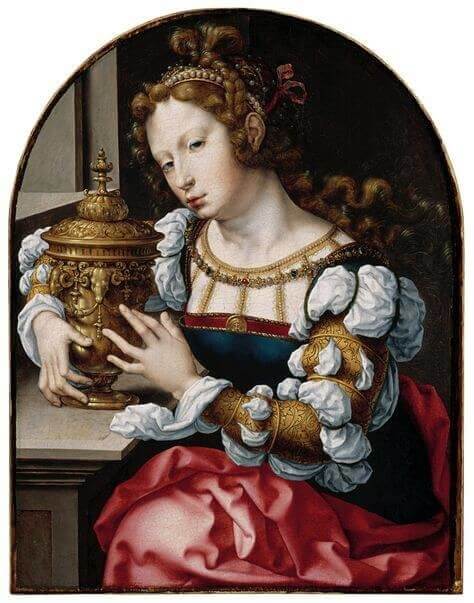
I met with Dr. Maryan Ainsworth, the Curator of European Paintings at The Metropolitan Museum of Art, on the twelfth hour of my visit to her most recent exhibition which is on view until the 17th of January, 2011. No, my stay at Man, Myth, and Sensual Pleasures: Jan Gossart’s Renaissance was not an exhibitionary marathon but spread across four separate visits, the last of which culminated in a magical hour spent with its organizer, earlier this month. The exhibition is a spectacular tour de force of scholarly and museological delight, neither overwhelming the other. Our conversation began with me confiding, “I believe that I have developed an incurable case of Gossartitis…”
Homa Taj – How did the idea of organizing an exhibition on a (relatively) little known artist come about?
Maryan Ainsworth – Since I did my Ph.D. dissertation (for Yale) on the other so-called Romanist, Bernard van Orley, I have long been interested in Jan Gossart. They are completely different artists, although they were both inspired in the first decades of the sixteenth century by the art of Rome. I always thought that Gossart’s oeuvre needed a new, comprehensive study, and that technical investigation of the paintings would help a lot to answer some of the most interesting and still unresolved questions about Gossart’s works. More recently, there has been renewed interest in Gossart by both Ph.D. students and senior scholars in the field. I thought it was an excellent time to bring these scholars together and to undertake a new study of Gossart.
HT – Technically speaking, the organization of the show has taken three years; however, as you mentioned during our earlier conversation, you could not have done this exhibition 15 years ago …since it has been a work in progress for nearly two decades.
MA – Exactly. Some of the most interesting discoveries about Gossart’s paintings have come from my recent technical study of his works. The possibility to make these discoveries at this time – which wouldn’t have been possible 15 years ago – comes from 1) having had the opportunity in the meantime to make detailed technical studies of the Bruges painter Gerard David, painters and their workshops in early 16th century Antwerp, and Ghent-Bruges manuscript illumination, and 2) having built up over the last 20 years or so such good working relationships with paintings conservation departments in this country and abroad that these departments willingly opened their facilities to me and assisted with gathering the technical documentation on the paintings housed in their collections. Fifteen years ago, many of these museums didn’t have the necessary equipment to do these studies, and our mutual interest and assistance in each others projects wasn’t as well developed. If I had had to do it all myself, the Gossart show and book could never have been completed in such a relatively brief time.
Download PDF File of The Conversation.
